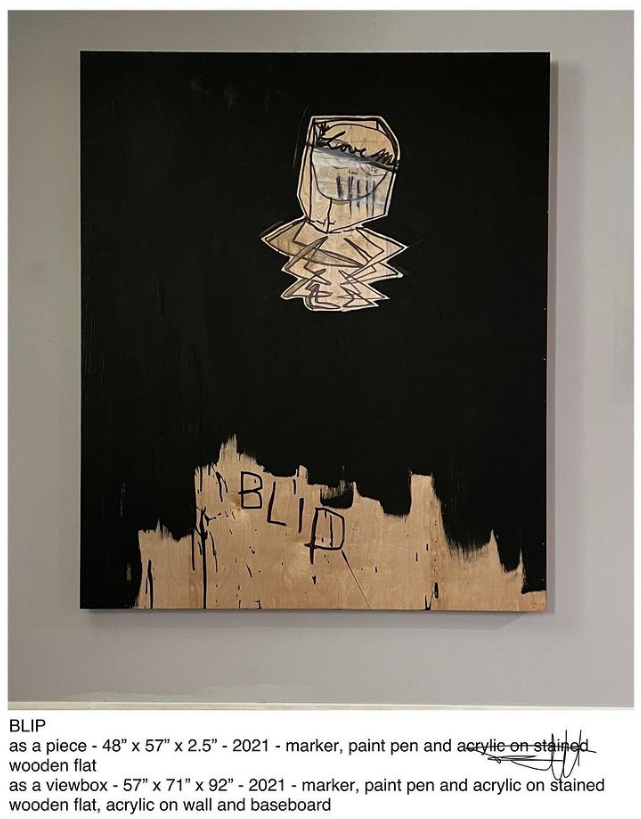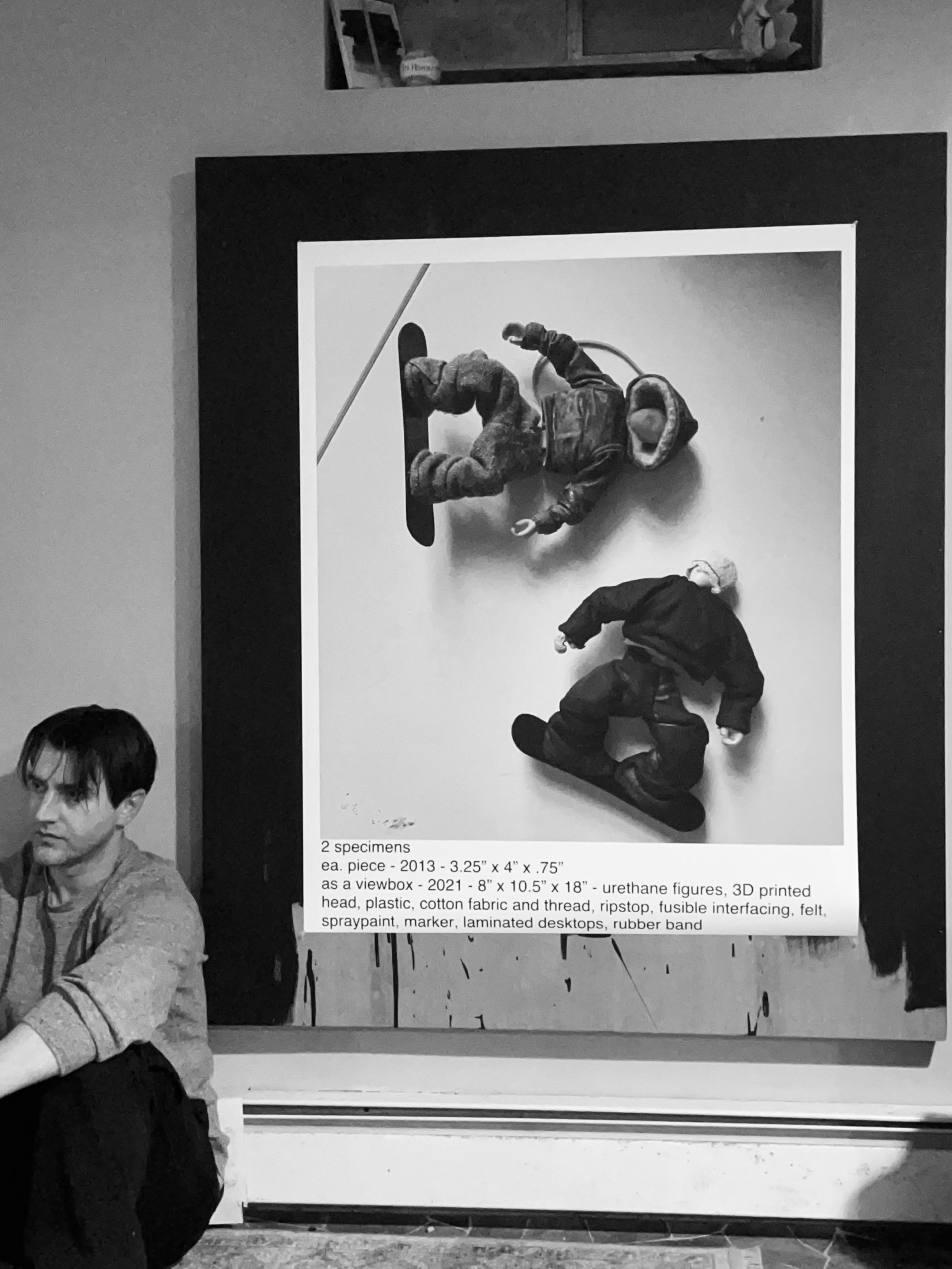Interview
Ted Hahn
Ted Hahn is a self taught visual artist living and working in Connecticut, USA. He explores spaces that are near him; he creates original work and places it in these spaces, then he captures the space and places it in a digital viewbox.
This creates three versions of every work he creates. One version is the original work which he considers a prop. The second version lives as a digital file that gets posted to Instagram. Lastly, he then prints this file and adds it to a new space of his choosing.
What is your background and how did you start your journey in the art world?
“My name is Theodore William Hahn. I was born on December 9 in Neenah, Wisconsin but moved to Halmstad, Sweden when I was 4. This is where I was introduced to spray painted graffiti art.
At 9, I collected cans for money and bought my first ever art supplies. I used them to paint on the Berlin Wall with spray paint I bought myself. At 22, I painted live onstage as the opening act for Blondie and created a show with the Boston Ballet where I also painted live onstage. That was the beginning of my journey, trying to get my visual art out to people and make my work as accessible as music is.
At 25, I founded a clothing line called Penny Clothing, which was picked up by Oakley and won me a scholarship to Parson’s, but I eventually dropped out due to mental and emotional health issues. I was later diagnosed with multiple conditions. I was working in retail, but spent all my free time (and money) on my art, trying to figure out who I am as an artist.
In 2016 I began my Instagram series, which is still what I’m creating now. In 2021 I created a show for Banditto Art in Italy and at the age of 40, I’ve begun my actual and steady career as an artist.”


What would you say inspires you most?
“My relationship with space and what to do with it inspires me most, while the fear of being like other visual artists might be my single greatest motivator. It motivates me just as much as when I'm inspired.”
What themes do you pursue? Is there an underlying message in your work?
“I pursue the capturing of spaces that are near me. I create works of art, avatars and installations which I then place in spaces. I then capture these spaces by flattening them through photography and placing the pictures in white, data labeled viewboxes. The underlying message could be that the space nearest me is actually priceless.”
“One of the highlights of my career was creating the cover art and logo for professional snowboarding icon Travis Rice’s movie called The Community Project.”
Which artists influence you most?
“Joseph Cornell, Tracy Emin, Cy Twombly, Andy Warhol, Alex Israel, Julien Schnabel, Jeff Koons, Damien Hirst, Mary Weatherford.”
How would you describe your work?
“I would describe my work as elevated beyond me and my opinions. My work is a space or a captured space, many times smaller, and shared in a digital and then a physical way. Always in that order.”
What is your creative process like?
“I take care of myself first and make sure I am balanced, then I gather materials. I collect materials and ideas. I meditate a lot. Then I create artworks in whatever medium best gets my point across. I can do this because I have a cache of supplies and I treat my original works as props that go inside my viewboxes. Some of these works I simply hold onto for years before I place them in a space. Other works I place in a space right away, capture the space on my phone, place the space in an app and complete it, share it on social media then print it and install the print wherever I want.”


What is an artist’s role in society and how do you see that evolving?
“The artist is to be free and live and create in a world of their own making. The artist is to have a career that is a gift to society and sparks genuine inspiration, enjoyment, interesting interactions and conversations.
The artists' role in society will evolve as artists balance staying true to their craft, with meeting this new generation where they're at. This new generation is bordering on being culture-less. It's up to the artist to create truly excellent work and then tell this new generation about the artists that came before. Explain to them the magical part of life that we call history and how there's no bridge to the future without a link to the past.”


Instagram: @tedhahnstudio


